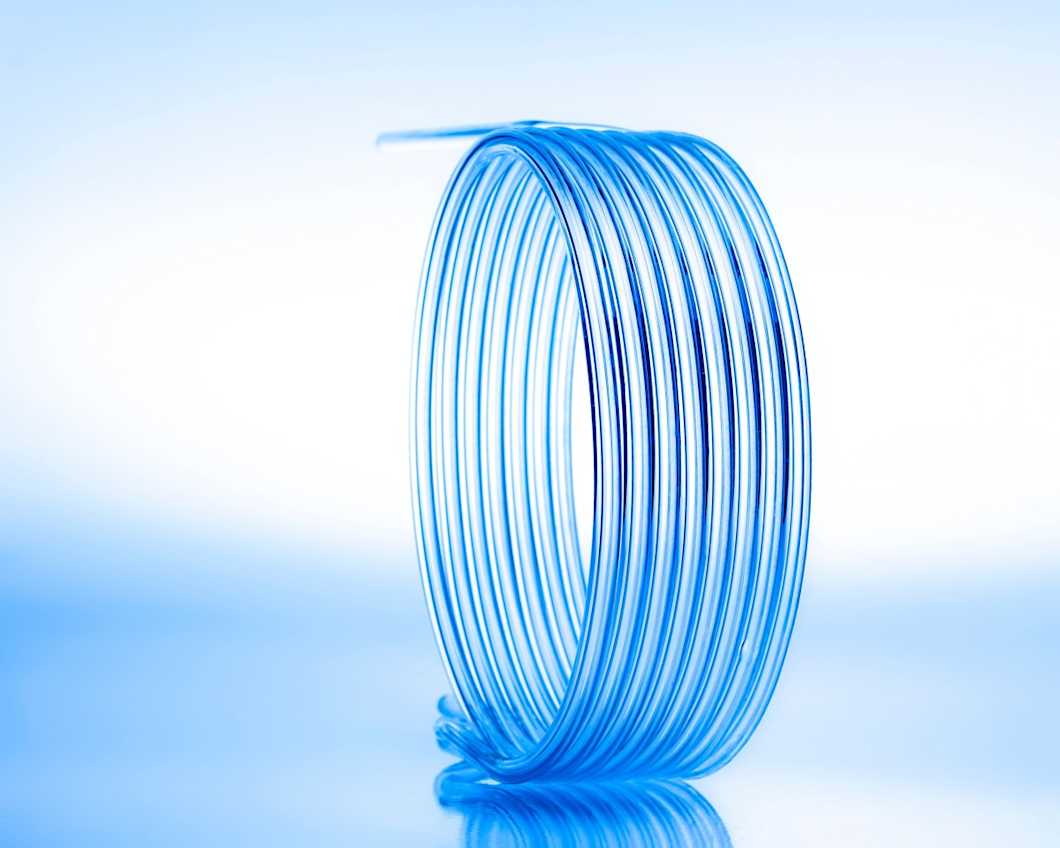TD-GC-MS analysis
Thermal desorption-gas chromatography-mass spectrometry (TD-GC-MS) is a combined sampling and analysis technique for separating and characterizing volatile and semi-volatile components, even when they are present in the sample in trace amounts.

Take a look at our GC-MS analysis selection
Specific migration testing – non-intentionally added substances (NIAS), GC-MS
PFAS in plastic, paper, and other solid materials (165 compounds)
Printing ink set-off testing with GC-MS
Pesticide residue screening (extensive package)
Specific migration testing – ethylene glycol and diethylene glycol
Specific migration testing – acetaldehyde (CAS 75-07-0)
Specific migration testing – 9,9-bis(methoxymethyl)fluorene
Pentachlorophenol (PCP) content in paper and board
Prices excluding VAT.
What is TD-GC-MS used for?
TD-GC-MS is a versatile technique that finds applications in multiple industries and research areas. Popular applications include:
Monitoring volatile and semi-volatile organic compounds (VOCs and SVOCs) released from construction materials, such as paints and adhesives, or consumer products, such as toys and cosmetics. Excessive VOC concentrations (of formaldehyde, toluene, etc.) are a relatively common reason for product recalls within the EU.
VOC and SVOC analysis of environmental samples like water and soil to monitor pollution levels.
Quantifying extractable and leachable VOCs released by pharmaceutical or medical device packaging.
Detection of organic contaminants on silicon wafers in the semiconductor industry.
Characterization and quantification of flavor and fragrance components in food and pharmaceutical industries.
How does thermal desorption work?
Thermal desorption works by heating the sample to a point where the volatile and semi-volatile components it contains are vaporized. These components are channeled to an absorbent trap, which collects and concentrates them. The adsorbent trap is then heated, causing the volatiles to be released and passing them through a GC-MS system where they are separated and analyzed.
Sample requirements and preparation
TD-GC-MS can be performed on samples of all phases, as long as they contain suitable volatile target components. Attention has to be paid to optimizing the sorbent selection, as this directly impacts the range and accuracy of compound detection and quantification.
Advantages and limitations of thermal desorption in GC-MS analysis
Thermal desorption is a valuable tool for selectively removing and concentrating compounds, offering enhanced sensitivity and enabling the detection of trace-level contaminants. The extent of sample preparation is also reduced when compared with solvent extraction, and the user is not exposed to toxic solvents.
The key limitation of TD is that different types of adsorbent traps will have a different propensity to capture different volatile compounds. Selecting the optimal sorbent may require prior knowledge of the target analytes or additional testing if the composition is unknown, introducing an element of trial-and-error when dealing with complex or unfamiliar samples.
Need TD-GC-MS analyses?
Measurlabs offers laboratory testing with TD-GC-MS and conventional GC-MS methods. We have committed to delivering the highest quality analyses with short turnaround times even for batches of hundreds of samples. More than 700 companies choose Measurlabs for accurate results and dependable service - contact us through the form below to get a quote and experience our service level yourself.
Suitable sample matrices
- Paints, pigments, and adhesives
- Construction materials
- Toys and other consumer products
- Food and beverages
- Water and soil
- Semiconductor wafers
Ideal uses of TD-GC-MS
- Identifying unknown volatile compounds
- VOC emission analysis
- Environmental studies
- Air pollution monitoring
Ask for an offer
Fill in the form, and we'll reply in one business day.
Have questions or need help? Email us at info@measurlabs.com or call our sales team.
Frequently asked questions
Measurlabs offers a variety of laboratory analyses for product developers and quality managers. We perform some of the analyses in our own lab, but mostly we outsource them to carefully selected partner laboratories. This way we can send each sample to the lab that is best suited for the purpose, and offer high-quality analyses with more than a thousand different methods to our clients.
When you contact us through our contact form or by email, one of our specialists will take ownership of your case and answer your query. You get an offer with all the necessary details about the analysis, and can send your samples to the indicated address. We will then take care of sending your samples to the correct laboratories and write a clear report on the results for you.
Samples are usually delivered to our laboratory via courier. Contact us for further details before sending samples.